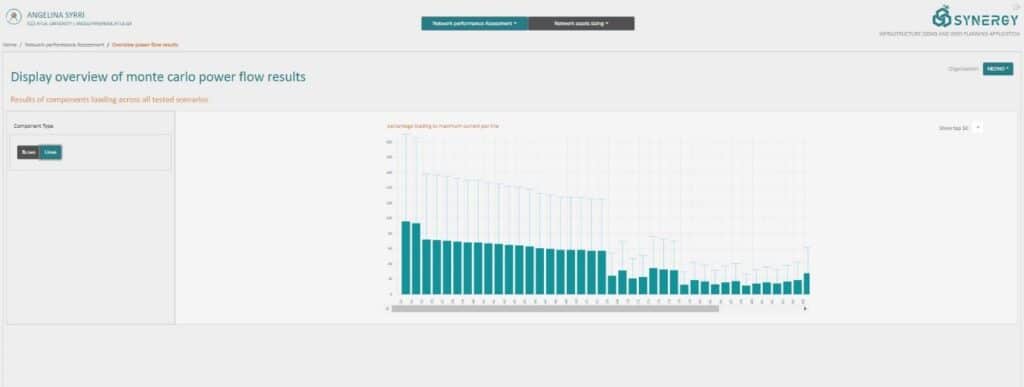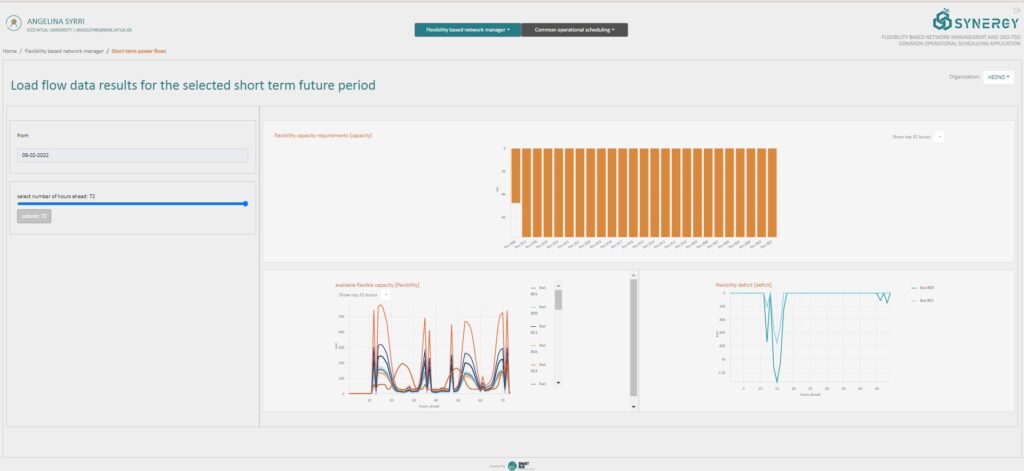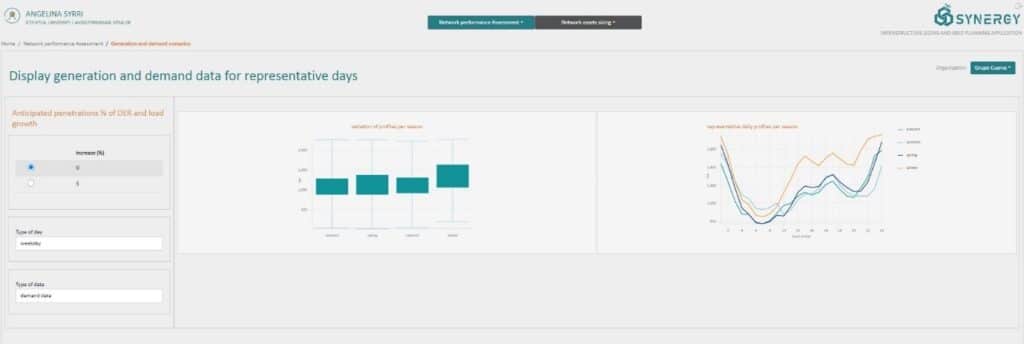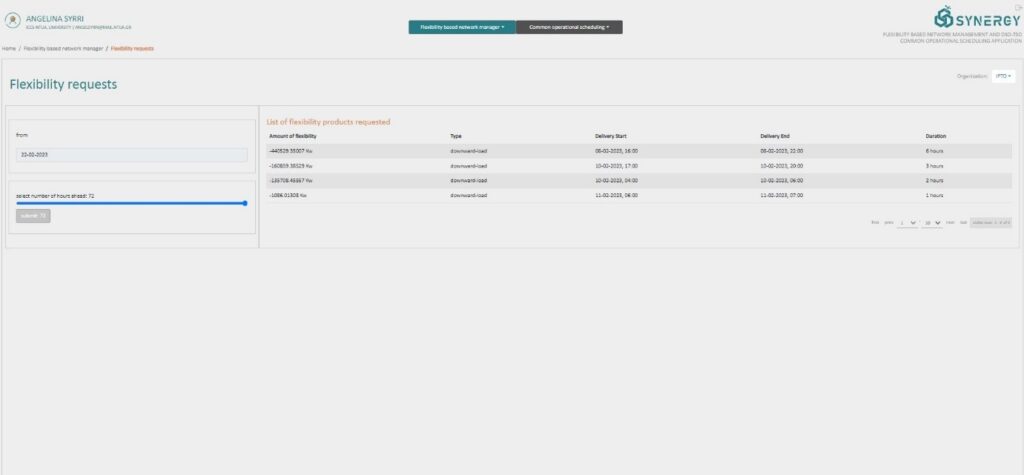WP5 of SYNERGY project aims to develop Advanced Grid-level Analytics for Optimized Network and Asset Management Services and Applications, targeting network operators as well as DER aggregators and RES operators. The Asset Management Tool Suite is eventually delivered, which comprises four applications.
Infrastructure Sizing and Grid Planning Application
The Infrastructure Sizing and Grid planning Application implements different features that target the operation and planning responsible operators of DSOs and TSOs, with the objective of providing valuable insights in terms of capacity and sizing requirements of network assets. The application utilizes available historical data and statistics such as expected next year forecasts of peak demand/generation data to create stochastic scenarios of demand and generation and perform power flow calculations to provide suggestions for optimal sizing and planning.
The application consists of two components:
The Network Performance Assessment Engine (NPAE) is responsible for the simulation of the operation of the network and assesses the state of the network in terms of performance, and power quality metrics. The assessment involves the evaluation of the electricity network steady state aspects using power flow calculations. Congestion issues and operational constraints, such as voltage violations, line/transformer over-loadings are considered in the assessment. The component involves the assessment of various operating conditions, incorporating the analysis of stochastic demand and generation profiles.

The Network Assets Sizing Engine (NASE) is responsible for providing solutions regarding optimal planning and sizing of the network assets. Solutions shall involve optimal capacity for new substations and lines in case further reinforcements are needed, as well as optimal sizing of new demand connections or DERs. The NASE is a complementary component to the NPAE, exploiting results such as reinforcement and flexibility needs to propose operational planning solutions in the mid-term (up to a month ahead) and in the long term (up to a year) for the provision of critical services such as congestion management in medium voltage distribution grids.
Next steps
In order to be able to use the application, following configuration steps need to be taken for every new DSO/TSO that wishes to integrate with the application:
- DSO and TSO are required to be registered as users of the SYNERGY Platform
- DSO and TSO are required to configure the necessary data check-in jobs, so required datasets get accessible through the platform
A version of the application is accessible at https://grid-planning.synergy-bigdata.eu
Flexibility based Network Management and DSO-TSO Common Operational Scheduling Application
The Flexibility based Network Management and DSO-TSO common operational scheduling Application implements all necessary features to allow network operators to optimally and securely schedule the available resources including flexible demand for the intra-day and day ahead in a coordinated manner. By exploiting all available data, including the flexibility potential of aggregators’ portfolio, the application facilitates the optimal scheduling of the flexible assets by TSOs and DSOs who aim to request specific congestion management and balancing services.

The Flexibility-Based Network Manager is responsible for assisting network operators to perform their short-term planning activities by utilizing available flexibility. The manager involves the process of data ingestion regarding flexibility availability from flexibility providers, identification of aggregated flexibility in substation and feeders’ level, calculation of flexibility deficit periods and calculation of flexibility requirements for network operators to facilitate their short-term planning and needs for congestion management and balancing.
The DSO-TSO Common Operational Scheduler is responsible for providing a common interface for the DSO and the TSO to facilitate common operational scheduling, considering the flexibility requirements for both actors for congestion management needs, balancing needs and other relevant ancillary services. The scheduler also proposes an appropriate coordination scheme clarifying the sequence of actions between the two operators and identifies the definite short term operational scheduling for both actors.
Next Steps
In order to be able to use the application, following configuration steps need to be taken for every new DSO/TSO that wishes to integrate with the application:
- DSO and TSO are required to be registered as users of the SYNERGY Platform
- DSO and TSO are required to configure the necessary data check-in jobs, so required datasets get accessible through the platform
A version of the application is accessible at https://flexibility-mng-coordination.synergy-bigdata.eu
In conclusion, the Asset Management Tool Suite developed under WP5 of the SYNERGY project provides advanced grid-level analytics for optimized network and asset management services and applications. The suite comprises four applications, two of which have been explained in this article. These applications are two valuable tools for DSOs and TSOs to optimize their networks, assess network performance, and schedule resources efficiently. By utilizing available data, these applications provide valuable insights into network assets’ capacity and sizing requirements and facilitate optimal scheduling of flexible assets for congestion management and balancing needs. The applications require DSOs and TSOs to be registered as users of the SYNERGY platform and configure necessary data check-in jobs. Overall, these applications have the potential to improve the performance and efficiency of electricity networks significantly.
Stay tuned for the next article on Advanced Performance Monitoring/Forecasting and Predictive Maintenance and Asset Management Optimization for Power Grids Applications.

